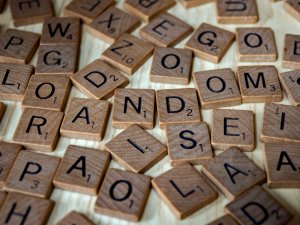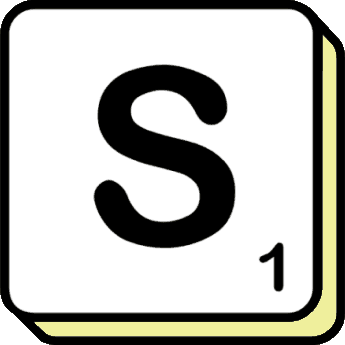The Mighty Comma
Author: Brian Bowman
Date Published: 5 July 2023
Punctuation plays a vital role in written communication, adding clarity, structure, and meaning to our words. Among the various punctuation marks, the humble comma often takes center stage. This unassuming punctuation mark, with its curving shape, has the power to shape the flow, rhythm, and comprehension of our sentences. In this blog article, we will delve into the world of commas, exploring their functions, rules, and the impact they have on our writing.

The Purpose of the Comma
Commas serve multiple purposes in writing. They act as a pause, helping readers to navigate sentences smoothly. Commas also provide clarity by separating elements within a sentence, aiding in comprehension and avoiding ambiguity. Here are some essential functions of the comma:
a) Separating Items in a List:
One of the primary uses of the comma is to separate items in a list. For example: "I bought apples, oranges, and bananas." The commas help distinguish each item and maintain coherence.
b) Setting off Introductory Elements:
When a sentence begins with an introductory phrase or clause, a comma is used to separate it from the main clause. For instance: "After finishing my meal, I went for a walk."
c) Separating Independent Clauses:
When two independent clauses are joined by a coordinating conjunction (and, but, or, etc.), a comma is used before the conjunction. Example: "She studied hard for the exam, but she didn't perform well."
d) Appositives and Nonessential Clauses:
Commas are used to set off appositives (additional information about a noun) and nonessential clauses. For example: "My brother, an accomplished pianist, will be performing tonight."
Common Comma Mistakes to Avoid
While commas are powerful tools, their misuse can lead to confusion and misinterpretation. Here are some common comma mistakes to be aware of:
a) The Comma Splice:
A comma splice occurs when two independent clauses are incorrectly joined with just a comma. Example: "She was tired, she decided to take a nap." Instead, you can use a coordinating conjunction or separate the clauses into two sentences.
b) Overusing Commas:
Using too many commas can disrupt the flow of a sentence. Avoid inserting unnecessary commas between every word or phrase. Instead, focus on their intended purpose and usage rules.
c) Missing Commas:
Neglecting to use commas when necessary can also lead to confusion. Ensure you correctly place commas in lists, after introductory elements, and between independent clauses.
Additional Comma Usage Guidelines
In addition to the fundamental functions and common mistakes, here are a few more guidelines to keep in mind when using commas:
a) Comma with Adjectives:
When multiple adjectives describe a noun, a comma is used between them. Example: "She had a beautiful, serene garden."
b) Comma with Dates, Addresses, and Numbers:
Commas are used to separate elements in dates, addresses, and numbers. For instance: "The event will take place on June 15, 2023, at 123 Main Street."
c) Comma with Direct Quotations:
Commas are employed to separate the dialogue tag from the quoted speech. Example: "He said, 'I will be there on time.'"
The Evolving Nature of Comma Usage
Language is constantly evolving, and so are punctuation rules. While there are established conventions for comma usage, it's important to note that style guides and preferences can vary. Depending on the context, some writers may adopt a more minimalistic approach to comma usage, while others may employ them more liberally. It's crucial to strike a balance between clarity and adherence to established conventions. Familiarize yourself with the style guide or guidelines applicable to your specific context, such as academic writing, journalistic writing, or creative writing.
Tools to Enhance Comma Usage
To ensure accurate and effective comma usage, consider the following tools and techniques:
a) Grammar and Style Guides:
Consult reputable grammar and style guides, such as The Chicago Manual of Style, The Associated Press Stylebook, or The Elements of Style by Strunk and White. These resources provide comprehensive rules and examples for proper comma usage.
b) Proofreading and Editing:
Always review your writing carefully, paying particular attention to comma usage. Proofreading and editing allow you to identify any misplaced or missing commas and ensure your sentences flow smoothly.
c) Read Aloud:
Reading your work aloud can help identify potential areas where commas are needed or can be removed. Listen for natural pauses or places where clarity could be enhanced by the judicious use of commas.
d) Seek Feedback:
When in doubt, seek feedback from peers, writing groups, or professional editors. Another set of eyes can provide valuable insights and help you refine your comma usage.
Conclusion
The comma, often underestimated, holds immense power in written communication. It serves as a guide, shaping the flow and clarity of our sentences. By understanding the various functions and rules of comma usage, we can elevate our writing and convey our intended messages more effectively. Remember to use commas judiciously, avoiding common mistakes while maintaining adherence to established conventions. As you navigate the realm of punctuation, let the comma be your trusted companion, enhancing the rhythm and coherence of your prose.
